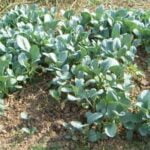Is mole scram safe for vegetable gardens? Mole scram, a popular pest control method, is often used to protect vegetable gardens from damage caused by moles and other pests. This article will explore the benefits, risks, and myths surrounding the use of mole scram in vegetable gardens, as well as provide tips and best practices for its effective application.
Mole scram is a granular repellent that is designed to deter moles and other pests from invading and damaging vegetable gardens. This product works by emitting an unpleasant scent that repels moles, voles, gophers, and other burrowing pests without causing harm to them or the plants in the garden.
While mole scram can be an effective solution for protecting vegetable gardens, there are also concerns and risks associated with its use. It’s important to understand these factors before deciding to incorporate mole scram into your gardening routine.
In the following sections of this article, we will delve deeper into the benefits of using mole scram in protecting vegetable gardens, analyze its effectiveness in repelling moles and other pests, address common myths and misconceptions about its use, compare it with other pest control methods, and provide tips for using it effectively.
Understanding the Risks and Concerns of Using Mole Scram in Vegetable Gardens
Mole Scram is a popular option for gardeners looking to protect their vegetable gardens from pesky moles and other pests. However, there are some risks and concerns associated with using Mole Scram in vegetable gardens that should be taken into consideration before application.
One of the main concerns is whether Mole Scram is safe for vegetable gardens. It is important to note that Mole Scram contains natural ingredients such as castor oil and granular repellents that are non-toxic to plants, pets, and humans. This makes it a safer option compared to chemical pesticides which can harm the environment and contaminate soil and water sources. Additionally, Mole Scram is eco-friendly and biodegradable, making it a preferred choice for many organic gardeners.
Another concern is whether Mole Scram may affect the taste or quality of the vegetables grown in the garden. The good news is that Mole Scram does not alter the taste or quality of vegetables in any way, making it an ideal choice for those who want to protect their produce without compromising its edibility.
Some gardeners may also worry about the potential impact of Mole Scram on beneficial insects such as pollinators. However, Mole Scram specifically targets moles and burrowing rodents, posing no threat to bees, butterflies, or other beneficial insects that are essential for a healthy vegetable garden ecosystem.
| Risks & Concerns of Using Mole Scram | Safety Measures |
|---|---|
| Potential impact on vegetable quality | Mole Scram does not alter taste/quality of veggies |
| Impact on beneficial insects | No threat to bees/butterflies/pollinators |
Exploring the Benefits of Using Mole Scram in Protecting Vegetable Gardens
Mole Scram is a natural and organic granular repellent that is designed to protect vegetable gardens from destructive underground pests such as moles, voles, gophers, and shrews. It works by emitting a strong scent that these pests find offensive, effectively driving them away from the treated area. There are numerous benefits to using Mole Scram in protecting vegetable gardens, making it a popular choice for gardeners looking for safe and effective pest control solutions.
Some of the key benefits of using Mole Scram in vegetable gardens include:
- Organic and Natural: Mole Scram is made from natural ingredients and does not contain any harmful chemicals, making it safe for use in organic gardening.
- Long-lasting Protection: Once applied, Mole Scram provides long-lasting protection against moles and other underground pests, reducing the risk of damage to vegetable crops.
- Easy to Use: Applying Mole Scram is simple and straightforward, requiring only a spreader or hand application to create a protective barrier around the garden.
In addition to these benefits, Mole Scram also helps to improve soil health by deterring pests that can disrupt the root systems of plants. This ultimately promotes healthier growth and higher yields in vegetable gardens. Overall, using Mole Scram can be a beneficial addition to integrated pest management strategies for vegetable gardens.
Analyzing the Effectiveness of Mole Scram in Repelling Moles and Other Pests
Mole Scram is a popular pest control product designed to repel moles and other pests from invading vegetable gardens. But how effective is Mole Scram in actually keeping these unwanted visitors at bay? Let’s take a closer look at its effectiveness in repelling moles and other pests from vegetable gardens.
Here are some factors to consider when analyzing the effectiveness of Mole Scram in repelling moles and other pests:
1. Active Ingredients: Mole Scram is formulated with natural ingredients such as castor oil, which is known for its ability to repel moles. These active ingredients work by creating an unpleasant environment for moles, causing them to seek out alternative areas for foraging and nesting.
2. Application Method: Proper application of Mole Scram is crucial for its effectiveness. Sprinkling the product evenly across the surface of the garden soil creates a protective barrier that deters moles from tunneling and damaging the roots of vegetable plants.
3. Longevity of Protection: One key aspect of evaluating the effectiveness of Mole Scram is how long it provides protection against moles and other pests. When applied according to the instructions, Mole Scram can provide long-lasting protection, reducing the need for frequent reapplication.
Overall, when used as directed, Mole Scram has been found to be effective in repelling moles and protecting vegetable gardens from damage. Its natural ingredients and proven application methods make it a valuable tool in maintaining a healthy garden environment.
Addressing Common Myths and Misconceptions About Mole Scram in Vegetable Gardens
There are several common myths and misconceptions surrounding the use of Mole Scram in vegetable gardens. It is important to address these in order to provide a clear understanding of the product and its effectiveness in protecting vegetables from pests.
Myth 1: Mole Scram Harms Plants and Soil
One common misconception about Mole Scram is that it can be harmful to plants and soil in vegetable gardens. However, Mole Scram is actually a natural granular repellent that does not contain any harmful chemicals. It works by emitting an odor that moles find unpleasant, thereby deterring them from entering the garden. In fact, Mole Scram can even benefit the soil by helping to aerate it as moles tunnel through the ground.
Myth 2: Mole Scram Is Harmful to Pets and Other Wildlife
Another myth surrounding Mole Scram is that it poses a threat to pets and other wildlife. However, Mole Scram is safe for use around children, pets, and wildlife when used according to the manufacturer’s instructions. It does not pose any significant risk to non-target animals, making it a safe option for pest control in vegetable gardens.
Myth 3: Mole Scram Is Not Effective in Repelling Moles
Some gardeners believe that Mole Scram is not effective in repelling moles and other pests from vegetable gardens. However, numerous studies and customer testimonials have shown that Mole Scram can be highly effective when properly applied. When used as directed, Mole Scram creates a protective barrier around vegetable plants, effectively deterring moles and other burrowing pests without causing harm to the environment or beneficial insects.
Comparing Mole Scram With Other Pest Control Methods for Vegetable Gardens
When it comes to protecting your vegetable garden from pests, there are various options available, including Mole Scram. However, it is essential to compare Mole Scram with other pest control methods to determine which one is the most effective and safe for your garden.
Chemical Pest Control
Many gardeners may consider using chemical pesticides to control pests in their vegetable gardens. While these products can be effective in managing pest populations, they come with potential risks. Chemical pesticides can harm beneficial insects and wildlife, contaminate soil and water, and pose health risks to humans and pets. In contrast, Mole Scram is an organic product that does not contain harmful chemicals, making it a safer option for use in vegetable gardens.
Physical Barriers
Another pest control method for vegetable gardens involves the use of physical barriers such as fences, netting, or row covers to keep pests away from plants. While these barriers can be effective in preventing pest damage, they may also require regular maintenance and can be expensive to install. Mole Scram, on the other hand, provides a cost-effective and low-maintenance solution for repelling moles and other underground pests without the need for physical barriers.
Natural Predators
Some gardeners rely on natural predators like birds, predatory insects, or small mammals to control pest populations in their vegetable gardens. While natural predators can help keep pest numbers in check, they may not always be present in sufficient numbers to provide effective pest control.
Additionally, attracting natural predators to the garden may require specific habitat modifications or supplemental feeding. Mole Scram offers a convenient and reliable alternative by creating an inhospitable environment for moles without relying on unpredictable natural predation.
In comparing Mole Scram with other pest control methods for vegetable gardens, it is evident that this organic repellent offers a safe and effective solution for protecting your plants from underground pests without the potential environmental and health risks associated with chemical pesticides or the maintenance requirements of physical barriers.
Tips and Best Practices for Using Mole Scram in Vegetable Gardens
Mole Scram is a popular product used by many gardeners to protect their vegetable gardens from moles and other pests. When using Mole Scram, there are some tips and best practices that can help ensure its effectiveness in repelling unwanted critters.
One important tip for using Mole Scram in vegetable gardens is to apply it correctly. This means following the instructions provided on the product packaging, which typically involve sprinkling the granules around the perimeter of the garden or near areas where moles are active. Ensuring that the application is even and thorough can help create a barrier that deters moles from entering the garden.
Another best practice for using Mole Scram is to reapply it as needed. Mole Scram is designed to be long-lasting, but heavy rain or irrigation may wash away the granules over time. Therefore, it’s important to monitor the condition of the application area and reapply as necessary to maintain its effectiveness.
It is also essential to store Mole Scram properly when not in use. Keeping it in a cool, dry place away from direct sunlight can help preserve its shelf life and ensure that it remains effective when needed. By following these tips and best practices, gardeners can maximize the benefits of using Mole Scram in their vegetable gardens.
| Tips for Using Mole Scram | Best Practices for Using Mole Scram |
|---|---|
| Apply evenly around garden perimeter | Reapply after heavy rain or irrigation |
| Follow instructions on product packaging | Store in cool, dry place away from sunlight |
Conclusion
In conclusion, Mole Scram has proven to be a safe and effective solution for protecting vegetable gardens from moles and other pests. While there may be some risks and concerns associated with its use, such as potential harm to beneficial insects or animals when not used properly, following the recommended application guidelines can mitigate these risks. The benefits of using Mole Scram, such as its natural ingredients and long-lasting repellent effects, outweigh the potential drawbacks.
It is important to note that Mole Scram is just one of many options available for pest control in vegetable gardens. It is important for gardeners to weigh the pros and cons of using Mole Scram against other methods, such as traps, barriers, or chemical pesticides. Each method has its own set of considerations, so it is essential for gardeners to choose the one that aligns with their values and environmental impact goals.
Ultimately, when used responsibly and in conjunction with best practices for organic gardening, Mole Scram can be an effective tool for protecting vegetable gardens from moles and other pests without causing harm to the environment or beneficial organisms. By carefully considering its use within the context of a comprehensive gardening strategy, Mole Scram can play a valuable role in maintaining healthy and thriving vegetable gardens.
Frequently Asked Questions
Is Mole Scram Safe for Gardens?
Mole Scram is considered safe for gardens. It is an organic, biodegradable repellent that does not harm plants, animals, or the environment. It works by creating a scent barrier that deters moles from the garden.
Can You Use Mole Poison in a Vegetable Garden?
Using mole poison in a vegetable garden is not recommended. Most mole poisons are toxic and can pose a risk to other wildlife, pets, and even humans. Additionally, the use of poison in a vegetable garden may contaminate crops.
Can Molemax Be Used in a Vegetable Garden?
Molemax can be used in a vegetable garden as it is designed to safely repel moles without harming plants or animals. This product usually contains natural ingredients such as castor oil, which creates an unpleasant environment for moles without posing any danger to the garden.

If you’re looking to get into vegetable gardening, or are just looking for some tips on how to make your current garden better, then you’ve come to the right place! My name is Ethel and I have been gardening for years. In this blog, I’m going to share with you some of my best tips on how to create a successful vegetable garden.





